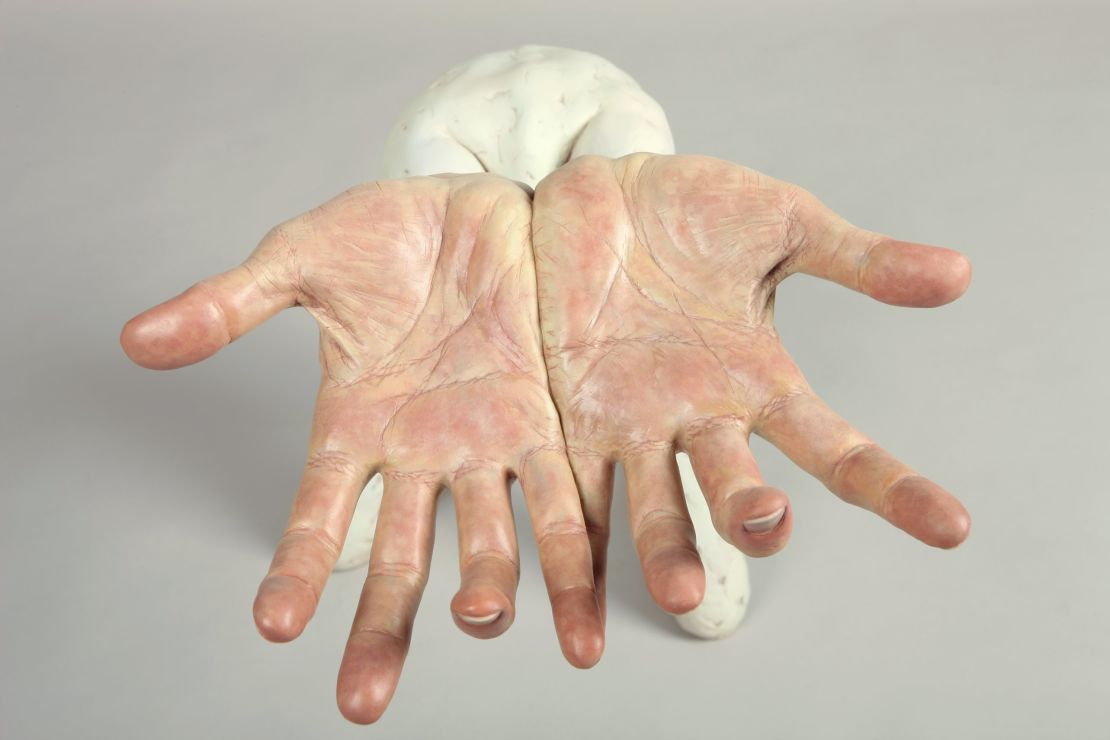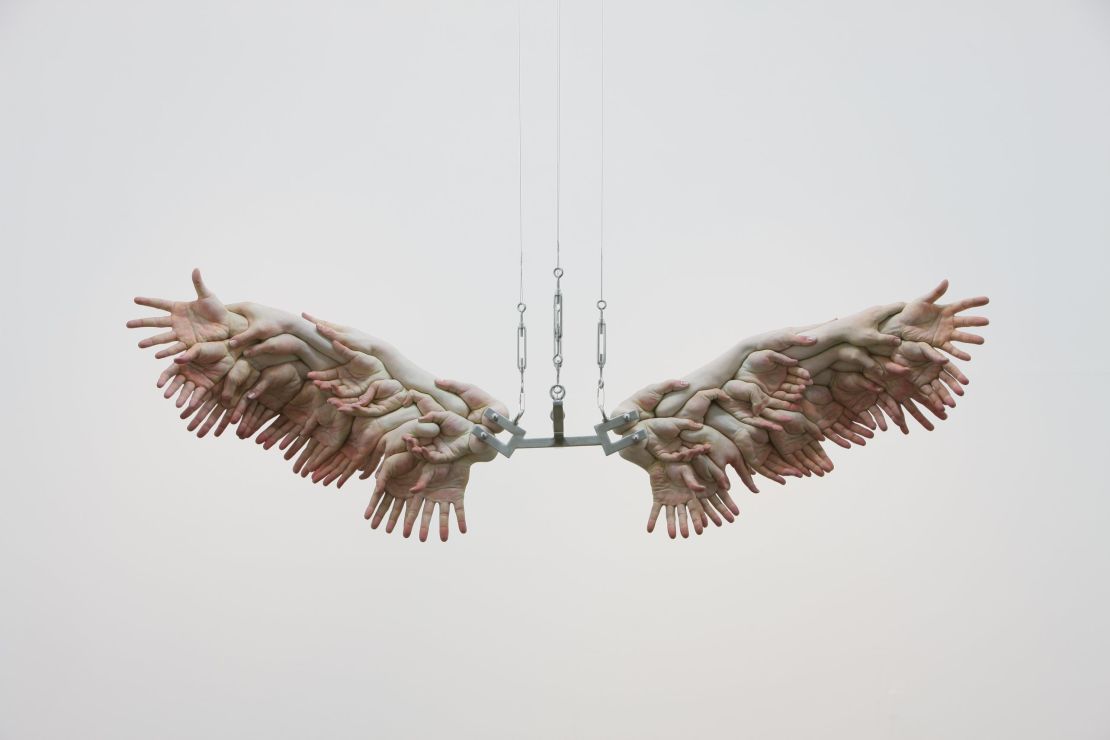In Choi Xooang’s hyperrealistic sculptures, eyeless heads face off against each other, dismembered hands convene to form fleshy angel wings, and men with dog heads pose in underpants.
It’s little surprise then that the Seoul-born South Korean declares: “If one feels uncomfortable physically or mentally when viewing my work, I would say it worked.”
The fine detail and often grotesque style of Choi’s work has helped him stand out among South Korea’s increasingly diverse contemporary arts scene. But in May he will make further inroads internationally, showing an exhibition at New York’s Doosan Gallery, where he is presently completing a six month residency.
“There is a thread of fine craftsmanship that runs through his work, exquisite rendering,” says author of the 2012 book “Korean Contemporary Art” Miki Wick Kim. “And of course, good artwork embodies so many different things coming together – it can’t just be a tangibly gorgeous surface, it needs to have context and relevance.”

Political roots
Choi, who studied sculpture at Seoul National University and held his first exhibition in 2002, has often had the relevance of his work tied to his country’s political history.
South Korea has changed dramatically since becoming a democracy in 1987, but the specter of autocratic rule seemingly bleeds into Choi’s work.
“I don’t try and say something directly [with my art], as if I were a flag bearer of the general public,” Choi says. “It’s more like I’m working to portray questions to society and the public living in this obscure situation.”
One of his most strikingly political works, “The One,” depicts a shaven-headed couple with the skin of their backs stitched together.
“People tend to think positively of couples, it was said that society needs to be ‘one,’ almost like propaganda,” says Choi.
“If that’s set forcefully, saying we need to become one, wouldn’t it be unfortunate? I showed that being stitched together hurts.”
South Korea’s healthy network of art schools has contributed to a thriving contemporary arts scene in the country and a patchwork of styles – such as the light installations of Choi Jeongmoon, the photo-led works of Jung Lee and Choi’s sculpture – all mingle.
Choi also draws inspiration from other artistic forces, sharing his Seoul studio with famous piano player, Minsoo Sohn, who has been a friend since high school.
“I lived in room 408; he lived in 508 above me,” Choi says of Sohn.
“He’d play piano when I worked, so I have memories of drawing whilst listening to him. Now, 20 years later, it’s the same.”
Misinterpretation
His sculptures, which usually take between two and five months to complete, have often drawn comparisons to horror films with their sewn-up skin, animal heads and pained expressions.
But Choi insists he isn’t influenced by such films.
He says one of his better known works “The Wing,” was not designed to shock, despite its severed hands that are formed into a set of wings.

“I worked to convey the expressions of the hands: Giving power, supporting each other, rather than [trying to] make it look like cut-off corpse hands,” he says.
Misinterpretation aside, Choi’s larger problem has been past accusations that he exploited people with Asperger’s syndrome for his “Islet of Asperger” series, which was first exhibited in Seoul in 2010.
“Someone said they would sue me over it…[that I had] I insulted them, presenting them grotesquely. it took me a lot of time to persuade him [not to],” says Choi.
“I was only borrowing the name ‘Asperger’ because it’s a word that has two meanings: of having problems with communication but also being very special,” he adds.
More praise than condemnation seems to be coming Choi’s way these days, though, and Kim believes his New York exhibition will only enhance this, as well as add to the growing international appreciation of Korean art.
“There are so many amazing Korean contemporary artists,” she says. “It’s under-represented internationally… but it’s getting much better.”







![Choi says that he occasionally likes to visit his exhibitions incognito to see how the public responds to them. "The regret of seeing something I could have done better is bigger than [any negativity from] seeing people observing it."](https://media.cnn.com/api/v1/images/stellar/prod/161215094859-xooang-choi-1.jpg?q=w_1625,h_2437,x_0,y_0,c_fill/h_447)














